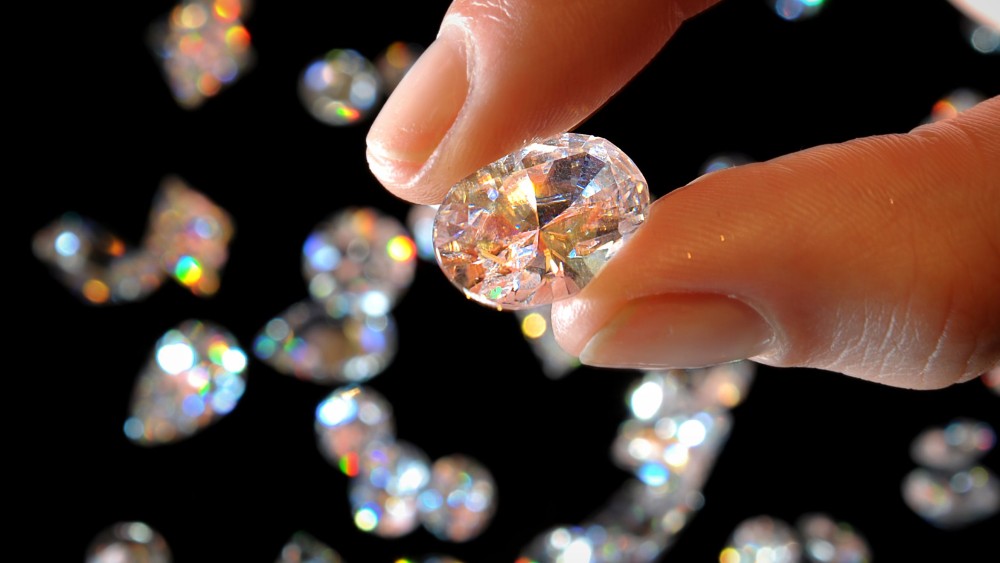7 Surprising Things You Didn’t Know About Lab-Grown Diamonds
7 Surprising Things You Didn’t Know About Lab-Grown Diamonds
-
Lab-Grown Diamonds Are The Perfect Alternative To Natural Ones
Lab-grown diamonds are the perfect alternative to natural ones. They offer a multitude of benefits including high quality, durability, and more. Keep reading to learn seven things you probably didn’t know about lab-grown diamonds!
What’s the difference between a diamond that’s been created in the lab and one that was mined from deep within the earth? Both kinds of diamonds have identical chemical and structural makeups, but lab-grown diamonds are grown in an entirely different way than their natural counterparts. Here are 7 facts you didn’t know about lab-grown diamonds.
-
They Are The Same Material As Natural Ones
It’s tough to get excited about lab-grown diamonds, given how similar they are to their natural counterparts. Lab diamonds are real diamond crystals that have been created in a lab with high heat and pressure in a way that mimics how real diamonds are made underground. What’s more, experts say lab-grown diamonds offer identical physical and optical properties as mined ones—same hardness and brilliance, same fire and scintillation (that is, sparkle). The difference between lab-grown stones and mined ones comes down to where they were born: Inside a lab or in a rocky mine? That’s it. To most of us nonprofessionals, both look exactly alike.
-
Some People Even Prefer Them

For some people, lab-grown diamonds are more beautiful than their mined counterparts. Lab-grown diamonds don’t have any of the imperfections that occur during natural diamond formation. That means they are much whiter and brighter, meaning they sparkle in ways that mined diamonds never can.
They also have fewer environmental impacts, meaning they’re better for everyone involved—from miners to consumers. While there has been some pushback on lab-grown diamonds over concerns about whether or not they are real, most jewelers agree that not only do they look and feel amazing but they bring a whole new sense of luxury to jewelry design that can drive sales numbers through the roof!
-
They Can Be Easier On The Environment
If you love diamonds but are turned off by their environmental implications, lab-grown diamonds might be a solution for you. Natural diamonds are mined from deep within Earth’s crust, which requires machinery and contributes to erosion. lab-created diamonds can be grown under controlled conditions and don’t affect our planet in any way – they only use electricity, not any harmful chemicals or machines. So while they do cost more than natural ones, they’re also more eco-friendly!
-
Other Ways To Save Money On Them
While lab-grown diamonds may cost significantly less than mined stones, they’re still an investment. If you’re ready to purchase one, it’s important to know all of your options to save as much money as possible. While there are many ways to cut costs on your purchase, these are seven of our favorites:
Shop for Used: Just like a diamond that has been mined from beneath Earth’s surface, a lab diamond has value and can be resold. The price will probably be discounted because it is used, but buying from someone who has already purchased one might help you avoid buying a completely new stone at full price.
-
But There Are Things To Look Out For
There are now hundreds of lab-grown diamond companies, and many of them rely on deceptive marketing practices to sell their products. Fortunately, there are steps you can take to avoid being ripped off: Before buying a diamond, be sure to do your research (see below). If a company refuses to provide information about its supply chain, don’t buy from them. Don’t fall for claims that lab diamonds are somehow better than mined diamonds; a diamond is a diamond—the only difference is where it came from.
-
How Much Do They Cost?
Most people assume that a lab-grown diamond would be much more expensive than a natural diamond. In reality, however, it’s possible to purchase lab diamonds for only a little bit more money than what you’d pay for an equivalent natural diamond.
For example, if you’re looking to purchase a 1 carat round cut laboratory-grown diamond, you can expect to pay around $3,500—just $300 more than its natural counterpart. Of course, certain factors like size and clarity will make some lab diamonds more expensive—but even with these variables taken into account, your total price tag should be similar.

















